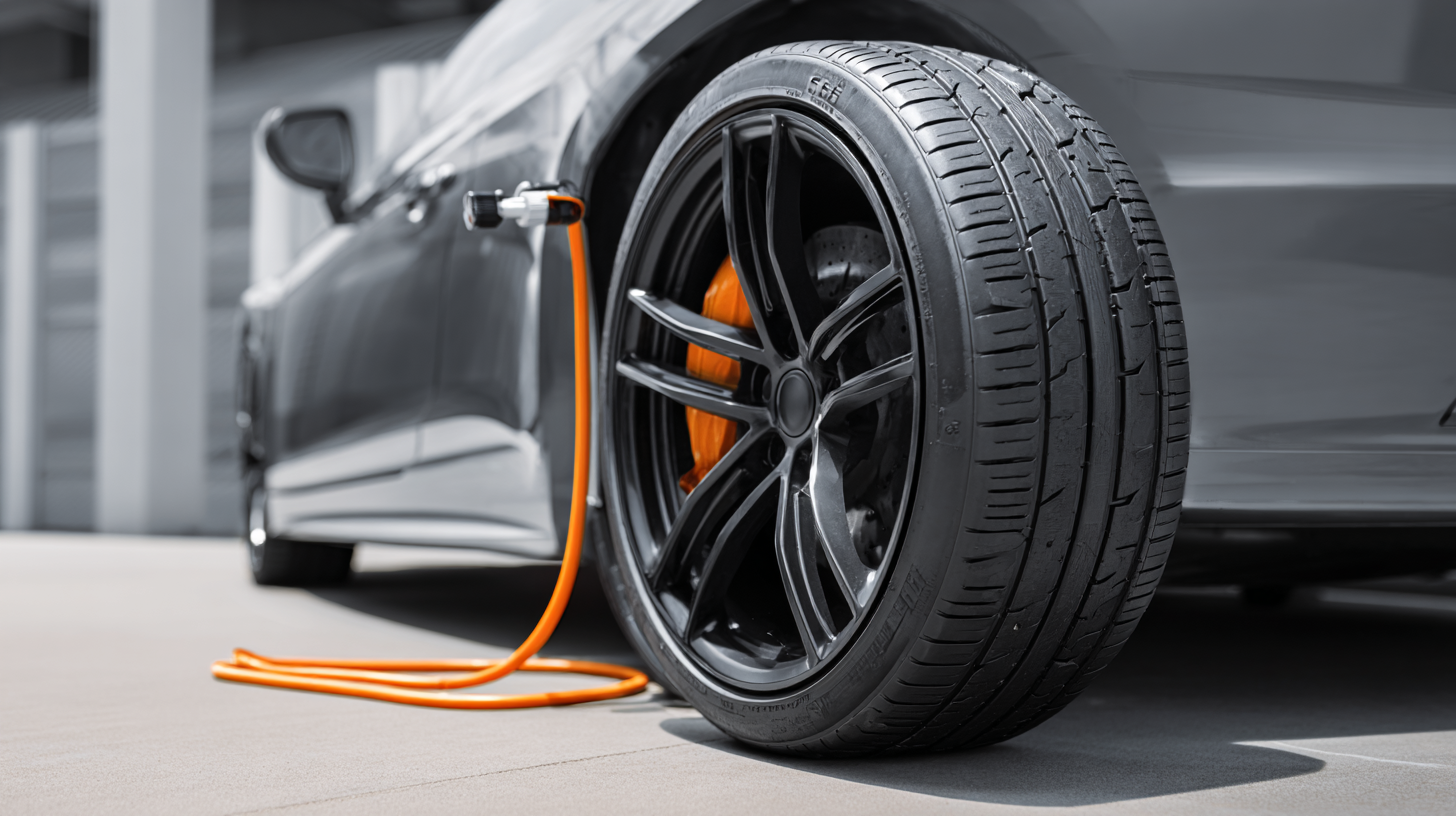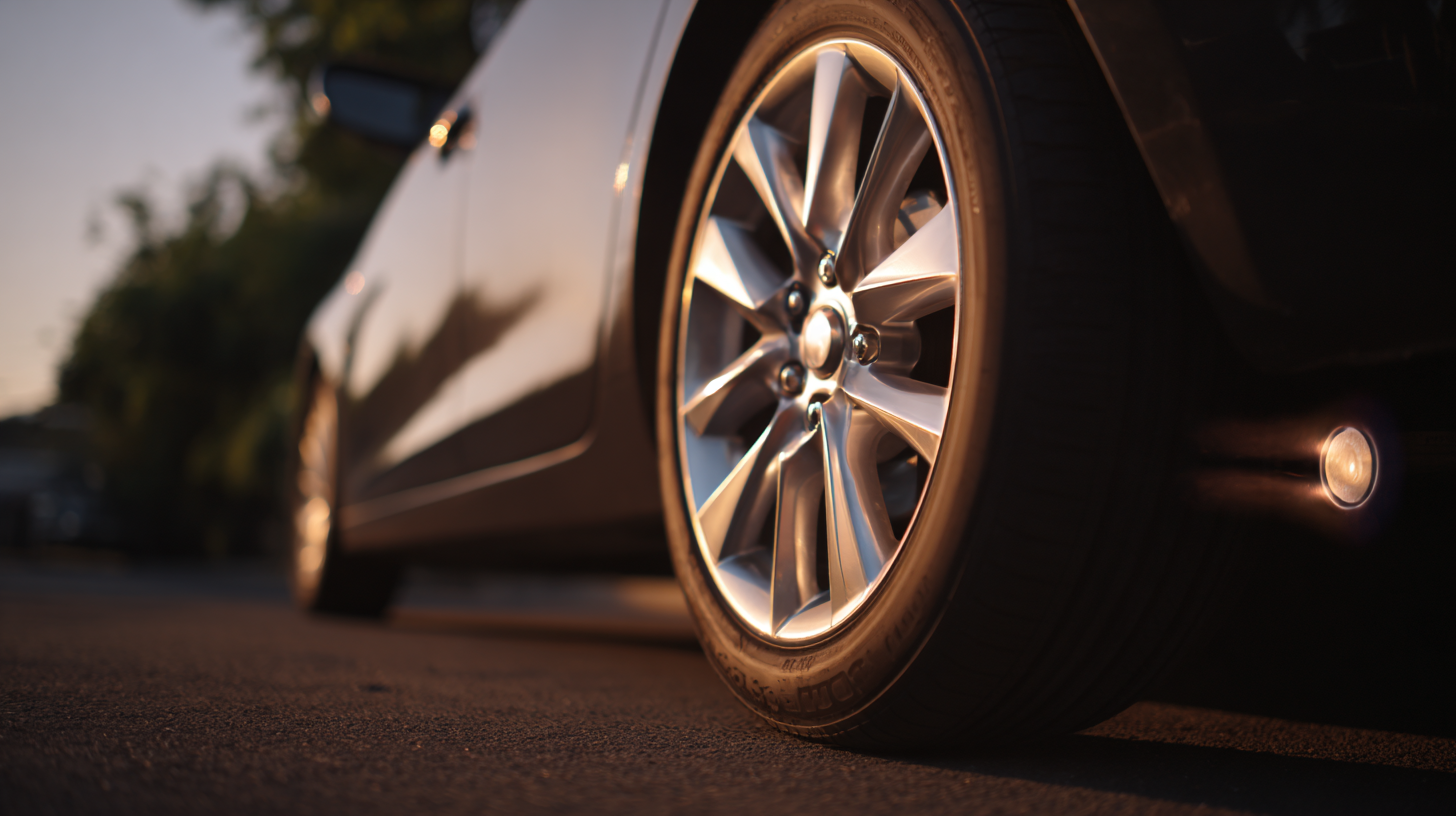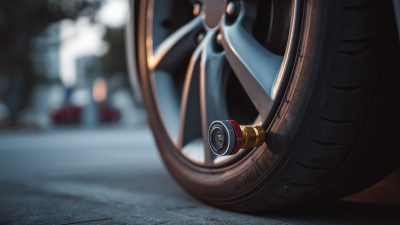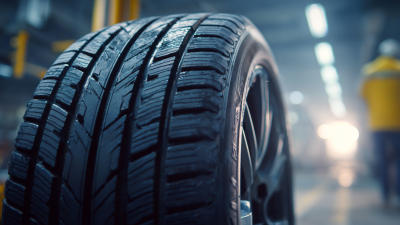Help is here
Understanding Tire Air Pressure: The Key to Safe and Efficient Driving
 Proper tire air pressure is essential for ensuring both safety and efficiency in driving. According to the
NHTSA, under-inflated tires contribute to nearly 10% of all vehicle crashes, highlighting the critical role tire air plays in
road safety. Furthermore, a study by the Rubber Manufacturers Association reveals that maintaining the recommended tire air pressure can improve fuel efficiency by up to
3.3%, translating into significant cost savings for drivers. With nearly 1 in 4 vehicles on the road having at least one
under-inflated tire, understanding how to monitor and maintain optimal tire air levels is crucial. This not only enhances vehicle performance but also maximizes tire lifespan, reduces wear, and promotes
safer driving conditions. In this article, we will explore essential tips and best practices for managing tire air pressure effectively, ensuring a smoother, safer ride.
Proper tire air pressure is essential for ensuring both safety and efficiency in driving. According to the
NHTSA, under-inflated tires contribute to nearly 10% of all vehicle crashes, highlighting the critical role tire air plays in
road safety. Furthermore, a study by the Rubber Manufacturers Association reveals that maintaining the recommended tire air pressure can improve fuel efficiency by up to
3.3%, translating into significant cost savings for drivers. With nearly 1 in 4 vehicles on the road having at least one
under-inflated tire, understanding how to monitor and maintain optimal tire air levels is crucial. This not only enhances vehicle performance but also maximizes tire lifespan, reduces wear, and promotes
safer driving conditions. In this article, we will explore essential tips and best practices for managing tire air pressure effectively, ensuring a smoother, safer ride.
How to Check Your Tire Air Pressure Accurately
 Proper tire air pressure is crucial for safe and efficient driving. To maintain optimal performance and ensure your safety on the road, checking your tire air pressure accurately is an essential task that every driver should prioritize. A simple tool like a tire pressure gauge can help you measure air pressure in just a few minutes. Make it a habit to check your tire pressure at least once a month and before long trips to prevent unexpected tire issues.
Proper tire air pressure is crucial for safe and efficient driving. To maintain optimal performance and ensure your safety on the road, checking your tire air pressure accurately is an essential task that every driver should prioritize. A simple tool like a tire pressure gauge can help you measure air pressure in just a few minutes. Make it a habit to check your tire pressure at least once a month and before long trips to prevent unexpected tire issues.
Tips: Always check your tire pressure when the tires are cold, as driving heats them up and can give a false reading. Refer to your vehicle’s owner manual or the placard on the driver’s door for the recommended pressure level. If your pressure readings are lower than specified, don't forget to inflate them accordingly and check for any potential leaks.
Additionally, be aware of the seasonal changes that may affect tire pressure. Cold temperatures can decrease air pressure, so it's wise to reassess it during winter months. Regularly maintaining the right air pressure not only enhances your vehicle's handling and safety but also improves fuel efficiency, making it an essential part of your vehicle maintenance routine.
How to Adjust Tire Pressure for Optimal Performance
Maintaining the proper tire air pressure is crucial for achieving optimal vehicle performance and safety. According to the National Highway Traffic Safety Administration (NHTSA), under-inflated tires can decrease fuel efficiency by up to 3% for every 1 PSI drop in pressure. This translates to significant cost savings at the pump, especially considering that regular maintenance can lead to a 25% increase in tire lifespan. Drivers are encouraged to regularly check their tire pressure, ideally once a month and before long trips, to ensure they are meeting manufacturer specifications.
Adjusting tire pressure is a straightforward yet vital process. To achieve optimal performance, it’s essential to inflate tires to the levels recommended in the vehicle's owner manual, often found on a sticker inside the driver’s door. Ambient temperature changes can significantly affect tire pressure; for every 10°F drop, tire pressure can decrease by about 1 PSI. Therefore, when adjusting tire pressure, it’s best to do so when tires are cold, avoiding measurements taken after driving. By adhering to these guidelines and utilizing proper tools like a digital tire pressure gauge, drivers can enhance their vehicle's handling, increase fuel efficiency, and promote safer driving conditions.
Understanding Tire Air Pressure: The Key to Safe and Efficient Driving
This chart demonstrates the relationship between tire pressure levels and vehicle performance metrics, emphasizing the optimal air pressure for safe and efficient driving. Maintaining the right tire pressure can enhance fuel efficiency and ensure safety on the road.
How to Interpret Tire Pressure Readings for Different Conditions
 Proper tire air pressure is crucial for safe and efficient driving, yet interpreting tire pressure readings can vary depending on different conditions. Firstly, it is essential to understand the recommended pressure range for your vehicle, typically found in the owner’s manual or on a sticker inside the driver's side door. For warm weather conditions, tire pressure should generally be at the recommended setting, as heat from the road can increase tire pressure by a few pounds. It’s advisable to check the pressure before the vehicle has been driven for optimal accuracy.
Proper tire air pressure is crucial for safe and efficient driving, yet interpreting tire pressure readings can vary depending on different conditions. Firstly, it is essential to understand the recommended pressure range for your vehicle, typically found in the owner’s manual or on a sticker inside the driver's side door. For warm weather conditions, tire pressure should generally be at the recommended setting, as heat from the road can increase tire pressure by a few pounds. It’s advisable to check the pressure before the vehicle has been driven for optimal accuracy.
In colder conditions, tire pressure tends to drop. It’s important to check your tires regularly during winter months, as a decrease of about 1 psi for every 10°F drop in temperature can lead to underinflation. If your vehicle feels sluggish or handling becomes difficult, low tire pressure may be the culprit. Conversely, over-inflation can occur if tires are inflated to the max pressure recommended on the tire itself instead of the vehicle's recommendation. Understanding these adjustments based on environmental conditions can significantly enhance vehicle performance and safety on the road.
How to Maintain Proper Tire Pressure Through Seasonal Changes
Maintaining proper tire pressure is crucial for safe and efficient driving, especially as seasons change. As temperatures drop in winter, the air inside your tires contracts, leading to a decrease in pressure. It is essential to check your tire pressure regularly and adjust it according to manufacturer recommendations. Doing so ensures optimal handling, fuel efficiency, and tire longevity during colder months.
Conversely, as temperatures rise in summer, tire pressure can increase due to the expansion of air. It is advisable to check the tire pressure when the tires are cold, preferably before driving, to get an accurate reading. Keeping an eye on your tire pressure throughout the year, particularly before long trips, will help you navigate the challenges posed by seasonal weather variations while enhancing your vehicle's performance and safety.
Understanding Tire Air Pressure: The Key to Safe and Efficient Driving
| Season | Recommended Tire Pressure (PSI) | Effects of Incorrect Pressure | Maintenance Tips |
|---|---|---|---|
| Winter | 32 - 35 PSI | Reduced traction, increased wear | Check pressure weekly, keep tires warm |
| Spring | 30 - 33 PSI | Poor handling, increased fuel consumption | Monitor pressure bi-weekly, rotate tires |
| Summer | 33 - 36 PSI | Overheating, blowouts | Check pressure every month, avoid overloading |
| Fall | 32 - 35 PSI | Tire damage, compromised safety | Inspect tires for damage, maintain proper levels |
How to Recognize Signs of Improper Tire Pressure and Take Action
Maintaining proper tire air pressure is crucial for safe and efficient driving. One of the first signs of improper tire pressure is uneven tire wear. If you notice that the tread on one side of the tire is noticeably lower than the other, it may indicate that your tires are either over-inflated or under-inflated. Additionally, listen for any unusual noises while driving, as low tire pressure can cause a thumping sound as the tire flattens against the road surface.
Another common indicator is a decrease in fuel efficiency. If you find that you are filling up your gas tank more often without a change in your driving habits, it could be due to under-inflated tires creating more drag. Regularly checking your tire pressure with a gauge can prevent many of these issues, as ideal pressure levels help in optimizing fuel consumption and ensuring a safer ride. Look for the recommended PSI (pounds per square inch) values typically found on a sticker inside the driver’s side door or in the vehicle owner’s manual. Taking action upon noticing these signs can lead to a more confident driving experience.
Related Posts
-

Discover the Health Benefits of Dill Air for Enhanced Wellbeing
-

Understanding the Importance of Tire Monitor Sensors for Safe Driving
-

Understanding Tire TPMS: How Your Car's Pressure Monitoring System Enhances Safety and Efficiency
-

Understanding the Impact of Tire Valve Sensors on Vehicle Safety and Fuel Efficiency
-

Understanding the Importance of Tire Service in Reducing Road Accidents and Enhancing Vehicle Safety
-

Ultimate Guide to Choosing the Right Tire for Your Vehicle on a Tire Website
